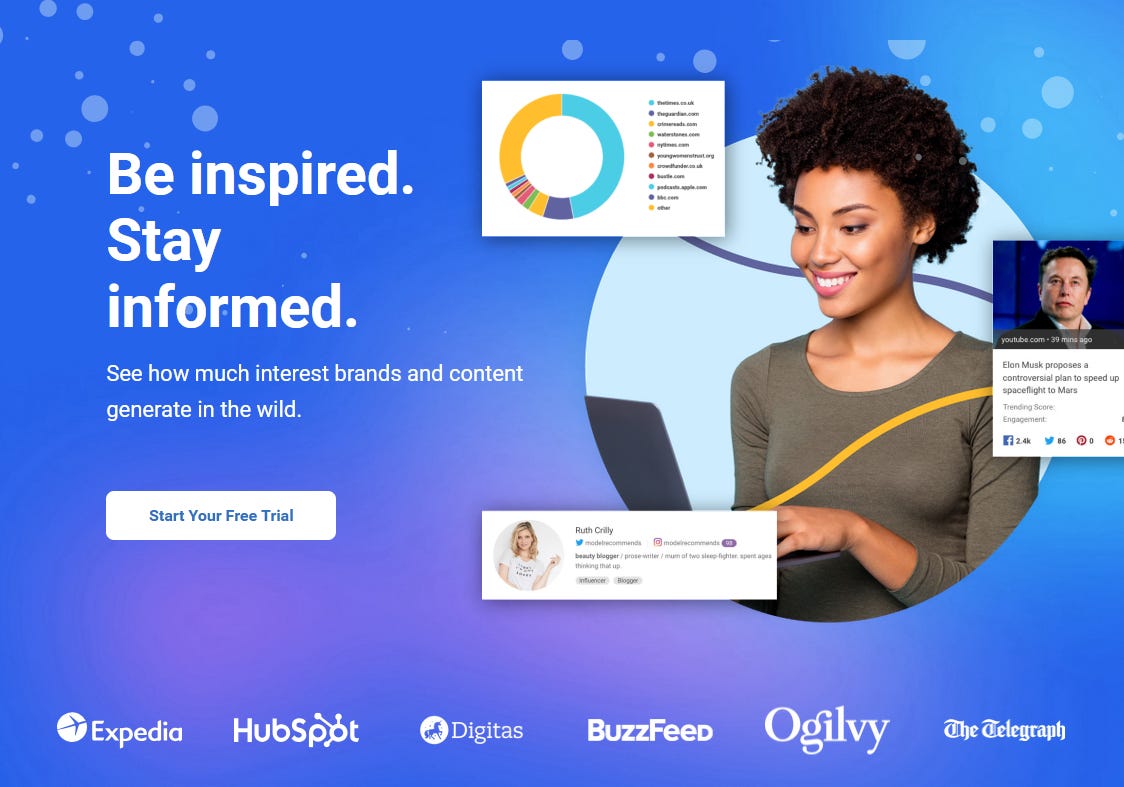The use of artificial intelligence in writing has been a topic of debate in recent years, and a recent article in Wired has shed light on the growing trend of AI-generated content on Substack. According to an analysis by AI-detection startup GPTZero, at least 10 of the top 100 Substack newsletters are using AI in some capacity, with 7 of them "significantly relying" on AI-generated content. While the specific channels involved were not named, the analysis suggests that hundreds of thousands of Substack subscribers may be regularly consuming AI-generated or AI-assisted content, sometimes even paying for it.
The revelation fuels the ongoing conversation about the role of AI in writing and the potential implications for readers and writers alike. As AI-generated content becomes increasingly prevalent, it's essential to examine the benefits and drawbacks of this trend. In this article, we'll delve into the world of AI-assisted writing on Substack, exploring the different types of AI-generated content, the potential problems associated with it, and what it means for the future of writing and publishing.
We'll also examine the various levels of AI involvement in writing, from simple grammar and spell checkers to fully AI-generated content, and discuss the criticisms and concerns associated with each level. By the end of this article, you'll have a better understanding of the complex issues surrounding AI-assisted writing on Substack and be able to form your own opinion on whether it's a problem or a solution.
What’s the Role of AI in Writing?
The use of artificial intelligence in writing has given rise to a variety of tools and technologies that can assist writers in different ways. From generating text to providing research assistance, AI-assisted writing tools are becoming increasingly popular among writers and publishers. In this chapter, we'll explore the different types of AI-assisted writing tools and how they can be used to support the writing process.
Language Generation Tools
Language generation tools are AI-powered tools that can generate text based on prompts. These tools can be used to create a wide range of content, from article summaries and social media posts to entire articles. Language generation tools use natural language processing (NLP) and machine learning algorithms to analyze the prompt and generate text that is coherent and relevant.

For example, a writer might use a language generation tool to generate a summary of a long article or to create a social media post based on a specific topic. These tools can save time and effort, and can also help writers to generate ideas and inspiration for their writing.
Content Suggestions and Ideas
Content suggestions and ideas tools are AI-driven tools that provide suggestions for article topics, headlines, or content ideas. These tools use machine learning algorithms to analyze data and identify trends and patterns that can inform content creation.

For example, a writer might use a content suggestions tool to generate ideas for articles based on current events or trending topics. These tools can help writers to stay up-to-date with the latest developments in their field and to create content that is relevant and engaging.
Editing and Proofreading Tools
Editing and proofreading tools are AI-powered tools that assist with grammar, syntax, and style suggestions. These tools use NLP and machine learning algorithms to analyze text and identify errors and areas for improvement.

For example, a writer might use an editing tool to check their text for grammar and spelling errors, or to suggest alternative phrases and sentences that can improve the clarity and coherence of their writing. These tools can help writers to refine their writing and to ensure that their text is error-free and polished.
Research Assistance
Research assistance tools are AI-driven tools that help with research, fact-checking, and data analysis. These tools use machine learning algorithms to analyze data and identify relevant information that can inform writing.

For example, a writer might use a research assistance tool to fact-check information or to analyze data and identify trends and patterns. These tools can help writers to save time and effort, and to create content that is accurate and reliable.
Hybrid Models
Hybrid models are AI-assisted writing tools that combine multiple functions, such as language generation and editing. These tools use machine learning algorithms to analyze text and generate suggestions for improvement.

For example, a writer might use a hybrid tool to generate text and then edit and refine it using the same tool. These tools can help writers to streamline their writing process and to create high-quality content quickly and efficiently.
Next, we'll explore the use of language generation tools in more depth, including the benefits and drawbacks of using these tools and the potential implications for writers and publishers.
Six Levels of AI Assistance
As mentioned above, AI-assisted writing tools can be used in a variety of ways to support the writing process. However, the level of AI involvement can vary significantly, and it's essential to understand the implications of each level. In this chapter, we'll explore the different levels of AI assistance, on a scale from human-led writing with AI suggestions to fully AI-generated content.
Level 1: Human-led writing with AI suggestions
At this level, human writers create the content, and AI tools provide suggestions for improvement, such as grammar, syntax, and style suggestions. AI-generated content is minimal, and the human writer has complete control over the final output. This level is not typically criticized, as AI tools are simply providing support to the human writer.
In fact, many online publications use spellcheck tools and grammar checkers, which are forms of AI assistance. The addition of AI elements at this level is not seen as a significant concern, as the human writer is still in control of the content.
Level 2: AI-assisted research and organization
At this level, AI tools help with research, fact-checking, and data analysis, but the human writer creates the content and structures the narrative. AI-generated content is still minimal, but the AI tools play a more significant role in supporting the human writer.
While AI tools are doing more work at this level, the human writer is still in control of the narrative, and the AI tools are simply providing support. As a result, this level is not typically criticized, as the human writer is still responsible for the final output.
Level 3: AI-generated outlines and summaries
At this level, AI tools generate outlines, summaries, or article abstracts, but the human writer creates the main content and expands on the AI-generated ideas. AI-generated content starts to play a more significant role, but the human writer still has control over the final output.
However, at this level, criticism starts to arise. Inauthenticity and lack of transparency become concerns, as AI-generated content can be misleading or deceptive if not clearly labeled as such. Transparency becomes essential to maintain reader trust, and it's crucial to clearly indicate when AI tools are being used to generate content.
Level 4: AI-generated content with human editing
At this level, AI tools generate significant portions of the content, but not all of it. a human editor reviews, revises, and refines the output to ensure it meets quality standards. AI-generated content is substantial, but human oversight and editing ensure that the final output meets human standards.
However, criticism arises at this level, as AI-generated content can lack the unique perspective, voice, and creativity that a human writer brings to a piece. Additionally, AI-generated content can perpetuate errors, biases, or misinformation if not properly fact-checked and edited.
Level 5: AI-generated content with minimal human oversight
At this level, AI tools generate most or all of the content, with minimal human review or editing. AI-generated content dominates the final output, and human involvement is limited to approving or rejecting the AI-generated content.
Criticism at this level includes homogenization of writing styles, as AI-generated content can lead to a lack of distinctiveness between different authors or publications. Additionally, AI-generated content can prioritize data-driven insights over human intuition, creativity, and critical thinking.
Level 6: Fully AI-generated content
At this level, AI tools generate the entire content, with no human involvement or oversight. The final output is entirely AI-generated, with no human editing or review.
Criticism at this level includes plagiarism and copyright concerns, as AI-generated content can raise significant concerns about ownership and attribution. It's essential to properly attribute or license AI-generated content to avoid these concerns.
Just to be clear, these criticisms accumulate as the level of AI involvement rises. To paraphrase a 20th century American philosopher: ‘Mo AI, Mo Problems’.
…But is it Any Good?
Clearly, the quality of the content produced by each method can vary significantly. At the lower levels of AI involvement, such as Level 1 and Level 2, the quality of the content is generally high, with minor improvements in grammar and style. The human writer's voice and creativity are still evident, and the AI-powered refinements enhance the overall quality of the content.
However, as the level of AI involvement increases, the quality of the content can become more variable. At Level 3, the quality depends on how well the human writer expands on the AI-generated framework, and there's a risk of the final product feeling somewhat formulaic. At Level 4, the quality can range from moderate to high, depending on the AI's capabilities and the editor's skills.
At the highest levels of AI involvement (Level 5 and Level 6), the quality of the content can be inconsistent and potentially problematic. While AI can produce grammatically correct and seemingly coherent text, it may lack true understanding, context, or originality. The content could be superficial, repetitive, or even nonsensical at times, and there's a significant risk of factual errors, biases, or inappropriate content being generated and published.
Ultimately, the quality of AI-assisted writing depends on a variety of factors, including the level of AI involvement, the capabilities of the AI tools, and the skills of the human writer or editor. While AI can be a powerful tool in supporting the writing process, it's essential to consider the potential trade-offs in terms of quality, creativity, and originality.
I’m curious about your stance on AI-assisted writing!





Thank you for writing this, very informative. I have using AI as an ESL writer to help me edit my work and it has been quite a journey! It feels like a real relationship that I am exploring with it and trying to determine the boundaries. I want it to serve me but not take over. And the same time, it is intelligent, I also want to allow it to grow and let me grow with it. We can all evolve together but it is a delicate dance.
Call me old-fashioned or a dinosaur, but I want to keep AI out of my writing. Others may choose differently. My free Grammarly is as much intrusion as I want, and I don't accept many of its suggestions. For example, Grammarly doesn't always understand why I want to use Oxford commas for clarity.